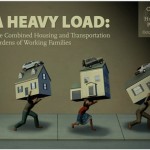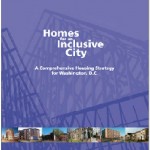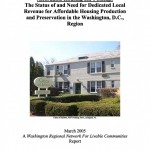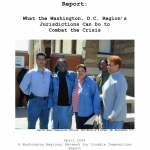Providing housing options that meet people’s needs across a range of ages, incomes, and family sizes is essential to an inclusive and economically prosperous D.C. region.
Building more housing near transit, expanding the variety of housing choices available, and preserving and building affordable housing will allow us to meet our region’s growing housing needs while creating sustainable, diverse, and thriving communities.
Allow a variety of housing options
The demand to live in walkable, transit-connected communities near Metro stations is high. This and recurring opposition to infill development have led to too little supply and high prices for homes near transit.
Allowing a wider variety of housing options near transit and commercial corridors increases the supply of needed housing and will help bring down housing prices and create more equitable access for households of different incomes, ages, and family sizes.
Preserve and build affordable housing
Even with abundant housing options, additional policies are needed to help us bridge the gap where housing costs are too expensive for working families and people on fixed incomes. Preserving existing affordable housing and building new affordable housing ensures everyone has access to safe, affordable housing, provides economic opportunity for all, reduces the risk of displacement, and supports diverse, vibrant communities,
Latest Happenings

The Coalition for Smarter Growth prioritizes the production and preservation of affordable housing, especially with access to transportation choices and jobs, as one critical element of truly interconnected, sustainable communities.

The Coalition for Smarter Growth prioritizes the production and preservation of affordable housing, especially with access to transportation choices and jobs, as one critical element of truly interconnected, sustainable communities.

"Affordable Housing Isn’t Cheap" is a report on the status of dedicated local revenue sources for affordable housing production and preservation in the Washington, D.C. region. It provides guidance to area jurisdictions that have yet to implement a dedicated local revenue source. This report describes dedicated revenue sources that already exist and forecasts what type and size of dedicated revenue sources make sense for each jurisdiction. Nearly all new affordable housing for lower income households across the country is created through partnerships between government funding agencies and private for- and non-profit developers. The public funding role is crucial because constructing housing is almost always not financially feasible at the rents or mortgage payments that lower income households can afford to pay, especially in areas with high housing costs like the Washington, D.C., region. Legal restrictions that accompany this public investment ensure that this housing will remain affordable to lower income families for varying amounts of time.
Inclusionary Zoning (IZ) policies require new and/or rehabilitated residential developments to include housing units affordable to low and moderate-income residents. In exchange, developers may receive non-monetary compensation—in the form of density bonuses—that reduce construction costs.

In 2004, the Washington Regional Network for Livable Communities (WRN) produced the DC region’s first peer-to-peer comparison and report card for affordable housing policies. Extraordinarily influential, the report informed advocates and officials alike on the increasing depth of need for affordable housing, and the role local governments should play to ‘fill the gap,’ and improve the health of low-income families and their overall communities. To see how each of our region's jurisdictions stacked up, check out the full report.




